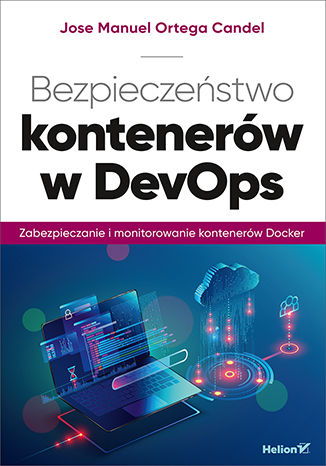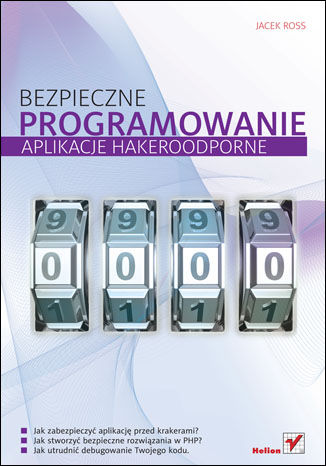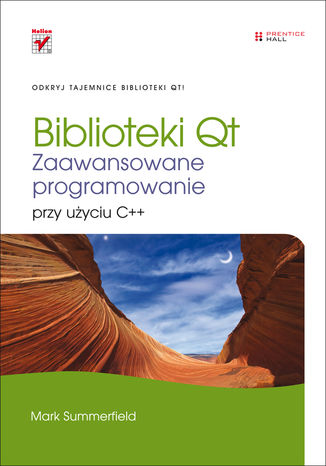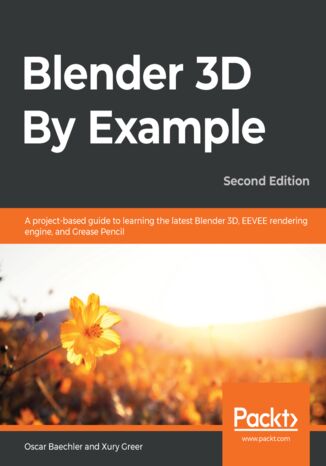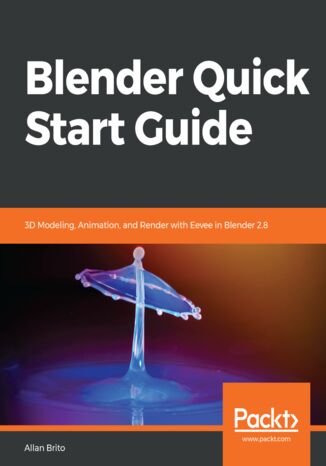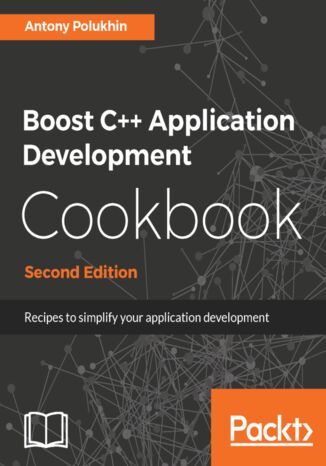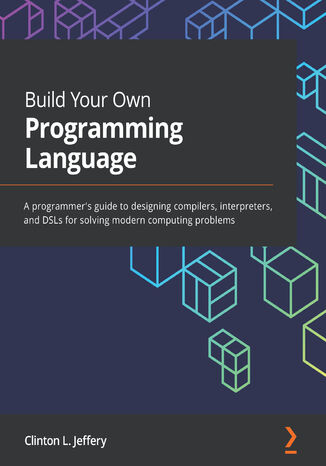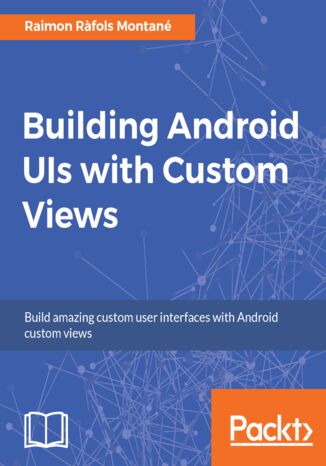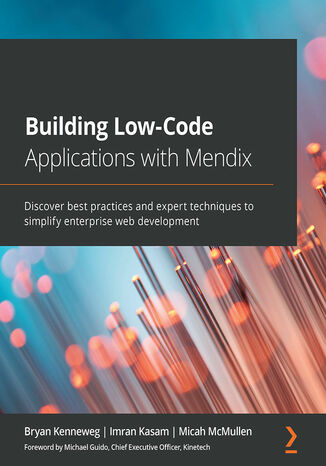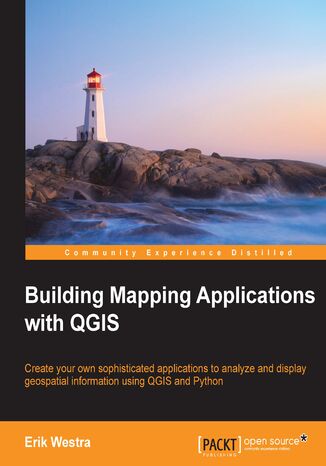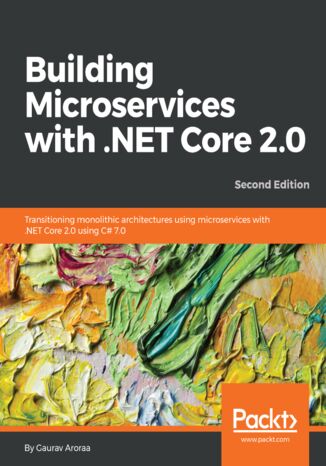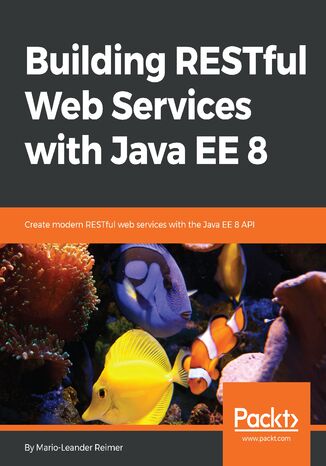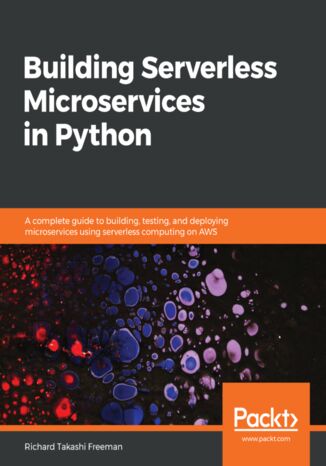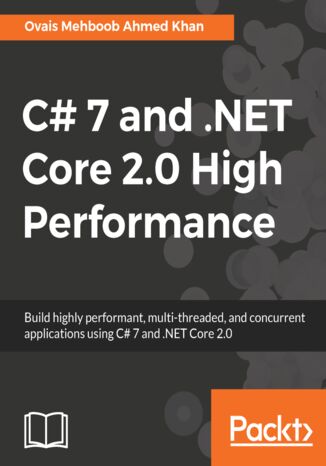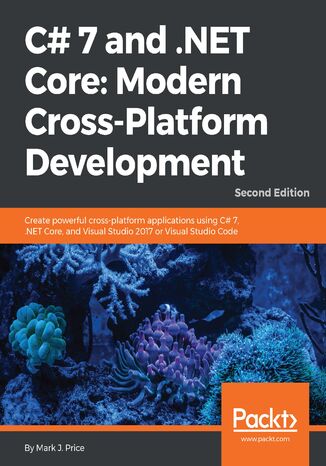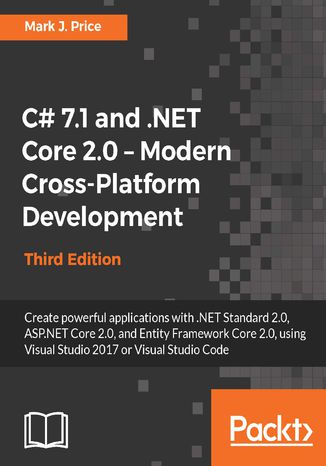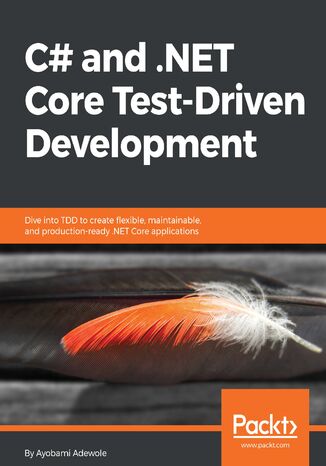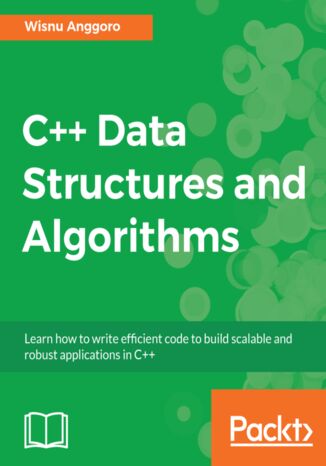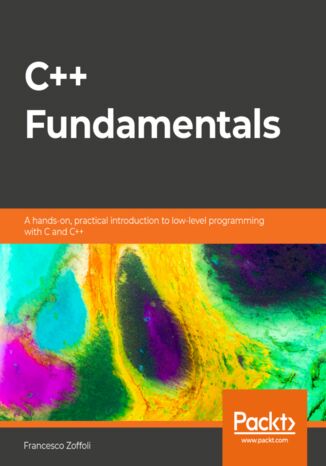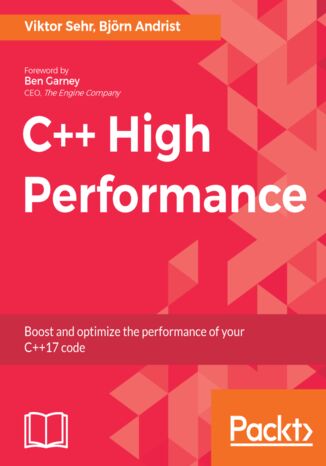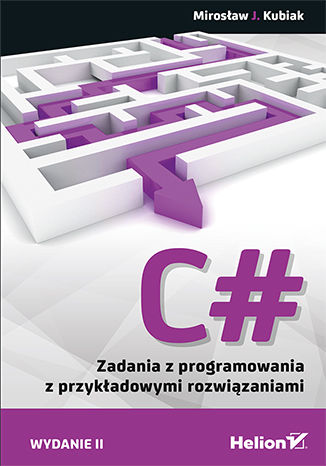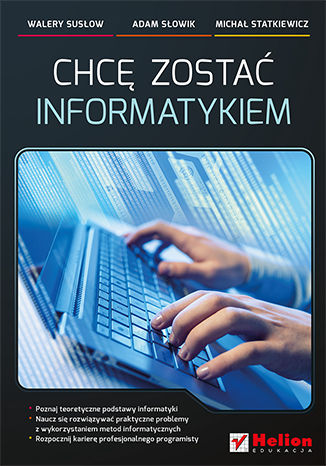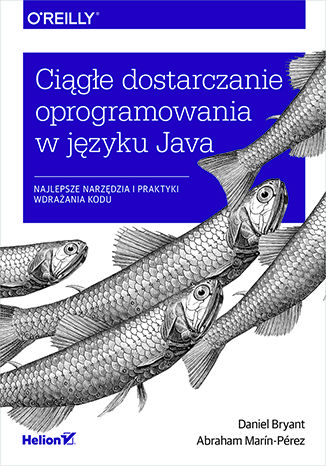Kategorien
E-Books
-
Wirtschaft
- Bitcoin
- Geschäftsfrau
- Coaching
- Controlling
- E-Business
- Ökonomie
- Finanzen
- Börse und Investitionen
- Persönliche Kompetenzen
- Computer im Büro
- Kommunikation und Verhandlungen
- Kleines Unternehmen
- Marketing
- Motivation
- Multimedia-Training
- Immobilien
- Überzeugung und NLP
- Steuern
- Sozialpolitik
- Handbȕcher
- Präsentationen
- Führung
- Public Relation
- Berichte, Analysen
- Geheimnis
- Social Media
- Verkauf
- Start-up
- Ihre Karriere
- Management
- Projektmanagement
- Personal (HR)
-
Für Kinder
-
Für Jugendliche
-
Bildung
-
Enzyklopädien, Wörterbücher
-
E-Presse
- Architektura i wnętrza
- Sicherheit und Gesundheit am Arbeitsplatz
- Biznes i Ekonomia
- Haus und Garten
- E-Business
- Ekonomia i finanse
- Esoterik
- Finanzen
- Persönliche Finanzen
- Unternehmen
- Fotografie
- Informatik
- HR und Gehaltsabrechnung
- Frauen
- Computer, Excel
- Buchhaltung
- Kultur und Literatur
- Wissenschaftlich und akademisch
- Umweltschutz
- meinungsbildend
- Bildung
- Steuern
- Reisen
- Psychologie
- Religion
- Landwirtschaft
- Buch- und Pressemarkt
- Transport und Spedition
- Gesundheit und Schönheit
-
Geschichte
-
Informatik
- Office-Programme
- Datenbank
- Bioinformatik
- IT Branche
- CAD/CAM
- Digital Lifestyle
- DTP
- Elektronik
- Digitale Fotografie
- Computergrafik
- Spiele
- Hacking
- Hardware
- IT w ekonomii
- Wissenschaftliche Pakete
- Schulbücher
- Computergrundlagen
- Programmierung
- Mobile-Programmierung
- Internet-Server
- Computernetzwerke
- Start-up
- Betriebssysteme
- Künstliche Inteligenz
- Technik für Kinder
- Webmaster
-
Andere
-
Fremdsprachen lernen
-
Kultur und Kunst
-
Lektüre
-
Literatur
- Anthologien
- Ballade
- Biografien und Autobiografien
- Für Erwachsene
- Drama
- Tagebücher, Memoiren, Briefe
- Epos
- Essay
- Science Fiction
- Felietonys
- Fiktion
- Humor, Satire
- Andere
- Klassisch
- Krimi
- Sachbücher
- Belletristik
- Mity i legendy
- Nobelpreisträger
- Kurzgeschichten
- Gesellschaftlich
- Okultyzm i magia
- Erzählung
- Erinnerungen
- Reisen
- Gedicht
- Poesie
- Politik
- Populärwissenschaftlich
- Roman
- Historischer Roman
- Prosa
- Abenteuer
- Journalismus
- Reportage
- Romans i literatura obyczajowa
- Sensation
- Thriller, Horror
- Interviews und Erinnerungen
-
Naturwissenschaften
-
Sozialwissenschaften
-
Schulbücher
-
Populärwissenschaft und akademisch
- Archäologie
- Bibliotekoznawstwo
- Filmwissenschaft
- Philologie
- Polnische Philologie
- Philosophie
- Finanse i bankowość
- Erdkunde
- Wirtschaft
- Handel. Weltwirtschaft
- Geschichte und Archäologie
- Kunst- und Architekturgeschichte
- Kulturwissenschaft
- Linguistik
- Literaturwissenschaft
- Logistik
- Mathematik
- Medizin
- Geisteswissenschaften
- Pädagogik
- Lehrmittel
- Populärwissenschaftlich
- Andere
- Psychologie
- Soziologie
- Theatrologie
- Teologie
- Theorien und Wirtschaftswissenschaften
- Transport i spedycja
- Sportunterricht
- Zarządzanie i marketing
-
Handbȕcher
-
Spielanleitungen
-
Professioneller und fachkundige Leitfaden
-
Jura
- Sicherheit und Gesundheit am Arbeitsplatz
- Geschichte
- Verkehrsregeln. Führerschein
- Rechtswissenschaften
- Gesundheitswesen
- Allgemeines. Wissenskompendium
- akademische Bücher
- Andere
- Bau- und Wohnungsrecht
- Zivilrecht
- Finanzrecht
- Wirtschaftsrecht
- Wirtschafts- und Handelsrecht
- Strafrecht
- Strafrecht. Kriminelle Taten. Kriminologie
- Internationales Recht
- Internationales und ausländisches Recht
- Gesundheitsschutzgesetz
- Bildungsrecht
- Steuerrecht
- Arbeits- und Sozialversicherungsrecht
- Öffentliches, Verfassungs- und Verwaltungsrecht
- Familien- und Vormundschaftsrecht
- Agrarrecht
- Sozialrecht, Arbeitsrecht
- EU-Recht
- Industrie
- Agrar- und Umweltschutz
- Wörterbücher und Enzyklopädien
- Öffentliche Auftragsvergabe
- Management
-
Führer und Reisen
- Afrika
- Alben
- Südamerika
- Mittel- und Nordamerika
- Australien, Neuseeland, Ozeanien
- Österreich
- Asien
- Balkan
- Naher Osten
- Bulgarien
- China
- Kroatien
- Tschechische Republik
- Dänemark
- Ägypten
- Estland
- Europa
- Frankreich
- Berge
- Griechenland
- Spanien
- Niederlande
- Island
- Litauen
- Lettland
- Mapy, Plany miast, Atlasy
- Miniführer
- Deutschland
- Norwegen
- Aktive Reisen
- Polen
- Portugal
- Andere
- Przewodniki po hotelach i restauracjach
- Russland
- Rumänien
- Slowakei
- Slowenien
- Schweiz
- Schweden
- Welt
- Türkei
- Ukraine
- Ungarn
- Großbritannien
- Italien
-
Psychologie
- Lebensphilosophien
- Kompetencje psychospołeczne
- zwischenmenschliche Kommunikation
- Mindfulness
- Allgemeines
- Überzeugung und NLP
- Akademische Psychologie
- Psychologie von Seele und Geist
- Arbeitspsychologie
- Relacje i związki
- Elternschafts- und Kinderpsychologie
- Problemlösung
- Intellektuelle Entwicklung
- Geheimnis
- Sexualität
- Verführung
- Aussehen ind Image
- Lebensphilosophien
-
Religion
-
Sport, Fitness, Diäten
-
Technik und Mechanik
Hörbücher
-
Wirtschaft
- Bitcoin
- Geschäftsfrau
- Coaching
- Controlling
- E-Business
- Ökonomie
- Finanzen
- Börse und Investitionen
- Persönliche Kompetenzen
- Kommunikation und Verhandlungen
- Kleines Unternehmen
- Marketing
- Motivation
- Immobilien
- Überzeugung und NLP
- Steuern
- Sozialpolitik
- Handbȕcher
- Präsentationen
- Führung
- Public Relation
- Geheimnis
- Social Media
- Verkauf
- Start-up
- Ihre Karriere
- Management
- Projektmanagement
- Personal (HR)
-
Für Kinder
-
Für Jugendliche
-
Bildung
-
Enzyklopädien, Wörterbücher
-
E-Presse
-
Geschichte
-
Informatik
-
Andere
-
Fremdsprachen lernen
-
Kultur und Kunst
-
Lektüre
-
Literatur
- Anthologien
- Ballade
- Biografien und Autobiografien
- Für Erwachsene
- Drama
- Tagebücher, Memoiren, Briefe
- Epos
- Essay
- Science Fiction
- Felietonys
- Fiktion
- Humor, Satire
- Andere
- Klassisch
- Krimi
- Sachbücher
- Belletristik
- Mity i legendy
- Nobelpreisträger
- Kurzgeschichten
- Gesellschaftlich
- Okultyzm i magia
- Erzählung
- Erinnerungen
- Reisen
- Poesie
- Politik
- Populärwissenschaftlich
- Roman
- Historischer Roman
- Prosa
- Abenteuer
- Journalismus
- Reportage
- Romans i literatura obyczajowa
- Sensation
- Thriller, Horror
- Interviews und Erinnerungen
-
Naturwissenschaften
-
Sozialwissenschaften
-
Populärwissenschaft und akademisch
- Archäologie
- Philosophie
- Wirtschaft
- Handel. Weltwirtschaft
- Geschichte und Archäologie
- Kunst- und Architekturgeschichte
- Kulturwissenschaft
- Literaturwissenschaft
- Mathematik
- Medizin
- Geisteswissenschaften
- Pädagogik
- Lehrmittel
- Populärwissenschaftlich
- Andere
- Psychologie
- Soziologie
- Teologie
- Zarządzanie i marketing
-
Handbȕcher
-
Professioneller und fachkundige Leitfaden
-
Jura
-
Führer und Reisen
-
Psychologie
- Lebensphilosophien
- zwischenmenschliche Kommunikation
- Mindfulness
- Allgemeines
- Überzeugung und NLP
- Akademische Psychologie
- Psychologie von Seele und Geist
- Arbeitspsychologie
- Relacje i związki
- Elternschafts- und Kinderpsychologie
- Problemlösung
- Intellektuelle Entwicklung
- Geheimnis
- Sexualität
- Verführung
- Aussehen ind Image
- Lebensphilosophien
-
Religion
-
Sport, Fitness, Diäten
-
Technik und Mechanik
Videokurse
-
Datenbank
-
Big Data
-
Biznes, ekonomia i marketing
-
Cybersicherheit
-
Data Science
-
DevOps
-
Für Kinder
-
Elektronik
-
Grafik / Video / CAX
-
Spiele
-
Microsoft Office
-
Entwicklungstools
-
Programmierung
-
Persönliche Entwicklung
-
Computernetzwerke
-
Betriebssysteme
-
Softwaretest
-
Mobile Geräte
-
UX/UI
-
Web development
-
Management
Podcasts
- E-Books
- Programmierung
- Andere - Programmierung
Andere - Programmierung
Bezpieczeństwo kontenerów w DevOps. Zabezpieczanie i monitorowanie kontenerów Docker
DevOps jest innowacyjną metodyką prowadzenia projektów, w której wyjątkowe znaczenie ma integracja zespołów programistów i administratorów systemów. Taki sposób rozwijania aplikacji wydaje się szczególnie atrakcyjny w odniesieniu do aplikacji kontenerowych. Technologia kontenerów i orkiestracji jest uważana za bardzo nowoczesną, jednak nawet w przypadku kontenerów Docker i klastrów Kubernetes kwestii bezpieczeństwa nie wolno lekceważyć. Podobnie jak w innych aplikacjach, zabezpieczanie zaczyna się podczas projektowania. O czym więc powinny pamiętać zespoły pracujące zgodnie z DevOps, aby zapewnić bezpieczeństwo swoich kontenerów? W tej książce pokazano związek między metodyką DevOps a praktyką dotyczącą kontenerów Docker i klastrów Kubernetes z perspektywy bezpieczeństwa, monitoringu i zarządzania. Przedstawiono dobre praktyki tworzenia obrazów kontenerów Docker, a także zasady bezpieczeństwa hostów, na których są uruchamiane kontenery, i wszystkich komponentów. Poruszono takie zagadnienia jak statyczna analiza zagrożeń obrazów Docker, podpisywanie obrazów za pomocą Docker Content Trust oraz umieszczanie ich w rejestrze Docker. Opisano też techniki zabezpieczania platformy Kubernetes. Ponadto znalazł się tutaj opis narzędzi do zarządzania kontenerami i aplikacjami, jak również monitorowania aplikacji kontenerowych i tworzenia sieci w platformie Docker. Najciekawsze zagadnienia: gruntowne wprowadzenie do metodyki DevOps czym są platformy kontenerowe: Docker, Kubernetes, Swarm, OpenShift zagrożenia kontenerów i obrazów narzędzia do audytu bezpieczeństwa i zabezpieczania aplikacji kontenerowych zarządzanie kontenerami i ich monitorowanie za pomocą narzędzi: cAdvisor, Sysdig, Portainer i Rancher Niezawodność DevOps to także bezpieczne wdrażanie kontenerów Docker!
Bezpieczne programowanie. Aplikacje hakeroodporne
Wyjdź zwycięsko z pojedynku z krakerami! Jak zabezpieczyć aplikację przed krakerami? Jak stworzyć bezpieczne rozwiązania w PHP? Jak utrudnić debugowanie Twojego kodu? Wyobraź sobie sytuację, w której poświęcasz mnóstwo czasu na stworzenie nowego, ciekawego rozwiązania w świecie informatyki. Kosztuje Cię to wiele dni i nocy ogromnego wysiłku. Dokładnie w momencie opuszczenia Twojego bezpiecznego komputera, udostępniony światu, Twój pomysł zostaje wystawiony na ciężką próbę — w sieci działają krakerzy, którzy za wszelką cenę będę próbowali złamać Twoje zabezpieczenia lub wykorzystać luki w Twojej aplikacji. Jak tego uniknąć? Jak tworzyć oprogramowanie odporne na ich ataki? Proste i przejrzyste odpowiedzi na podobnie skomplikowane pytania znajdziesz właśnie w tej książce! Podczas lektury poznasz zagrożenia, na jakie narażony jest programista, oraz proste sposoby utrudniania krakerom zadania. Dodatkowo zdobędziesz wiedzę na temat metod szyfrowania danych i wyznaczania sygnatur. Jednak, co najważniejsze, zobaczysz, jak wykorzystać tę wiedzę w praktyce! W publikacji "Bezpieczne programowanie. Aplikacje hakeroodporne " znajdziesz również sporo ciekawych informacji na temat zabezpieczania aplikacji sieciowych oraz zaawansowane metody, gwarantujące podniesienie bezpieczeństwa Twojego produktu do wysokiego poziomu. To jeszcze nie wszystko! W kolejnych rozdziałach autor prezentuje sposoby ochrony przed debugerami, patenty na bezpieczne tworzenie kodu na platformie .NET oraz psychologiczne aspekty tworzenia hakeroodpornych aplikacji! Przegląd zagrożeń, rodzaje oszustw i naruszeń bezpieczeństwa Zabezpieczenie programu przy użyciu numeru seryjnego Dostępne na rynku systemy zabezpieczania aplikacji Algorytmy szyfrujące Tworzenie skrótów wiadomości Wykorzystanie szyfrowania przy zabezpieczaniu oprogramowania Zabezpieczenia aplikacji wykorzystujących PHP i .NET Ochrona przed atakami typu: wstrzykiwanie SQL, XSS, DOS i DDOS Używanie zaawansowanych metod ochrony oprogramowania Sposoby zaciemniania programu Ochrona kodu przed debugerami Zastosowanie kluczy sprzętowych i technik biometrycznych Psychologiczne aspekty ochrony oprogramowania Dowiedz się, jak tworzyć aplikacje odporne na ataki!
Biblioteki Qt. Zaawansowane programowanie przy użyciu C++
Odkryj tajemnice biblioteki Qt! Qt to popularny zestaw bibliotek pozwalający na tworzenie atrakcyjnego interfejsu użytkownika dla różnych platform, w tym dla systemów: Windows, Mac OS X i Linux. Pierwsza wersja ukazała się w 1992 roku i od tego czasu jest intensywnie rozwijana. Za pomocą najnowszej wersji Qt można tworzyć aplikacje internetowe i mobilne. Zakres jej możliwości jest tak szeroki, że nawet doświadczeni programiści wykorzystują zaledwie ich ułamek. To może się zmienić dzięki tej książce! W trakcie lektury odkryjesz funkcje i możliwości, z których istnienia nie zdawałeś sobie sprawy. Ponadto nauczysz się pisać wydajne programy wielowątkowe, korzystać z silnika WebKit oraz współpracować z biblioteką Phonon. Dowiesz się również, jak sprawnie przy użyciu Qt tworzyć sformatowane dokumenty, a następnie eksportować je do różnych formatów (między innymi PDF, HTML i SVG). W książce znajdziesz wiele przykładów kodu, który został przetestowany przy użyciu Qt 4.6 zarówno na platformie Windows, jak i MacOS X oraz Linux. Wstęp do książki został napisany przez samego współtwórcę Qt - Eirika ChambeEnga. Sięgnij po doskonałe źródło informacji dla programistów! Dzięki tej książce: poznasz zaawansowane zastosowania biblioteki Qt wykorzystasz możliwości silnika WebKit przygotujesz atrakcyjny wizualnie dokument i wyeksportujesz go do popularnych formatów zgłębisz tajniki biblioteki Qt Wykorzystaj zaawansowane funkcje Qt!
Blender is a powerful 3D creation package that supports every aspect of the 3D pipeline. With this book, you'll learn about modeling, rigging, animation, rendering, and much more with the help of some interesting projects.This practical guide, based on the Blender 2.83 LTS version, starts by helping you brush up on your basic Blender skills and getting you acquainted with the software toolset. You’ll use basic modeling tools to understand the simplest 3D workflow by customizing a Viking themed scene. You'll get a chance to see the 3D modeling process from start to finish by building a time machine based on provided concept art. You will design your first 2D character while exploring the capabilities of the new Grease Pencil tools. The book then guides you in creating a sleek modern kitchen scene using EEVEE, Blender’s new state-of-the-art rendering engine. As you advance, you'll explore a variety of 3D design techniques, such as sculpting, retopologizing, unwrapping, baking, painting, rigging, and animating to bring a baby dragon to life.By the end of this book, you'll have learned how to work with Blender to create impressive computer graphics, art, design, and architecture, and you'll be able to use robust Blender tools for your design projects and video games.
Blender Quick Start Guide. 3D Modeling, Animation, and Render with Eevee in Blender 2.8
Blender is open source 3D creation software. With a long history and an enthusiastic community of users, it is the ideal choice for almost any kind of work with 3D modeling or animation. However, for new users, its power and ?exibillity can sometimes be daunting, and that’s when you need this book!The book starts by showing you round the all-new Blender 2.8 user interface. You'll look at the most commonly-used options and tools, such as navigating in 3D and selecting objects. You will then use and manipulate one of the most important windows of the interface, the 3D View.You'll learn how to use essential tools for working with 3D modeling. To give your models the feel of real-world objects, you'll learn how to create materials and set up surfaces. You'll see how to use Physically-Based Rendering (PBR), which allows you to craft realistic surfaces such as wood, stone, and metal. You will also work with Eevee, a new real-time render engine in Blender. You will see how to add motion to objects, making use of Blender's impressive 3D animation features. Finally, you'll learn how to create scenes and organize them for rendering, and later add titles and effects using built-in Blender tools.By the end of the book, you will be able to use Blender 2.8 new UI, Create 3D Models with textures, Animations, and Render them in real-time using Eevee.
If you want to take advantage of the real power of Boost and C++ and avoid the confusion about which library to use in which situation, then this book is for you. Beginning with the basics of Boost C++, you will move on to learn how the Boost libraries simplify application development. You will learn to convert data such as string to numbers, numbers to string, numbers to numbers and more. Managing resources will become a piece of cake. You’ll see what kind of work can be done at compile time and what Boost containers can do. You will learn everything for the development of high quality fast and portable applications. Write a program once and then you can use it on Linux, Windows, MacOS, Android operating systems. From manipulating images to graphs, directories, timers, files, networking – everyone will find an interesting topic.Be sure that knowledge from this book won’t get outdated, as more and more Boost libraries become part of the C++ Standard.
The need for different types of computer languages is growing rapidly and developers prefer creating domain-specific languages for solving specific application domain problems. Building your own programming language has its advantages. It can be your antidote to the ever-increasing size and complexity of software.In this book, you’ll start with implementing the frontend of a compiler for your language, including a lexical analyzer and parser. The book covers a series of traversals of syntax trees, culminating with code generation for a bytecode virtual machine. Moving ahead, you’ll learn how domain-specific language features are often best represented by operators and functions that are built into the language, rather than library functions. We’ll conclude with how to implement garbage collection, including reference counting and mark-and-sweep garbage collection. Throughout the book, Dr. Jeffery weaves in his experience of building the Unicon programming language to give better context to the concepts where relevant examples are provided in both Unicon and Java so that you can follow the code of your choice of either a very high-level language with advanced features, or a mainstream language.By the end of this book, you’ll be able to build and deploy your own domain-specific languages, capable of compiling and running programs.
To build great user interfaces for your Android apps that go beyond the standard UI elements, you need to use custom Android views. With these, you can give your app a distinctive look and ensure that it functions properly across multiple devices. This book will help you construct a great UI for your apps by teaching you how to create custom Android views. You will start by creating your first Android custom view and go through the design considerations. You will then see how the right choices will enable your custom view to perform seamlessly across multiple platforms and Android versions. You will create custom styleable attributes that work with Android XML layouts, learn to process touch events, define custom attributes, and add properties and events to them. By the end of this book, you will be able to create apps with custom views that are responsive and adaptable to make your app distinctive and an instant hit with its users.
Bryan Kenneweg, Imran Kasam, Micah McMullen, Michael Guido
Low-code is a visual approach to application development. It enables developers of varying experience levels to create web and mobile apps using drag-and-drop components and model-driven logic through a graphic user interface. Mendix is among the fastest-growing platforms that enable low-code enthusiasts to put their software ideas into practice without having to write much code, and Building Low-Code Applications with Mendix will help you get up and running with the process using examples and practice projects.The book starts with an introduction to Mendix, along with the reasons for using this platform and its tools for creating your first app. As you progress, you’ll explore Mendix Studio Pro, the visual environment that will help you learn Mendix app creation. Once you have your working app ready, you’ll understand how to enhance it with custom business logic and rules. Next, you’ll find out how to defend your app against bad data, troubleshoot and debug it, and finally, connect it with real-world business platforms. You’ll build practical skills as the book is filled with examples, real-world scenarios, and explanations of the tools needed to help you build low-code apps successfully.By the end of this book, you’ll have understood the concept of low-code development, learned how to use Mendix effectively, and developed a working app.
The microservices architectural style promotes the development of complex applications as a suite of small services based on business capabilities. This book will help you identify the appropriate service boundaries within your business. We'll start by looking at what microservices are and their main characteristics. Moving forward, you will be introduced to real-life application scenarios; after assessing the current issues, we will begin the journey of transforming this application by splitting it into a suite of microservices using C# 7.0 with .NET Core 2.0. You will identify service boundaries, split the application into multiple microservices, and define service contracts. You will find out how to configure, deploy, and monitor microservices, and configure scaling to allow the application to quickly adapt to increased demand in the future.With an introduction to reactive microservices, you’ll strategically gain further value to keep your code base simple, focusing on what is more important rather than on messy asynchronous calls.
Java Enterprise Edition is one of the leading application programming platforms for enterprise Java development. With Java EE 8 finally released and the first application servers now available, it is time to take a closer look at how to develop modern and lightweight web services with the latest API additions and improvements.Building RESTful Web Services with Java EE 8 is a comprehensive guide that will show you how to develop state-of-the-art RESTful web services with the latest Java EE 8 APIs. You will begin with an overview of Java EE 8 and the latest API additions and improvements. You will then delve into the details of implementing synchronous RESTful web services and clients with JAX-RS. Next up, you will learn about the specifics of data binding and content marshalling using the JSON-B 1.0 and JSON-P 1.1 APIs. This book also guides you in leveraging the power of asynchronous APIs on the server and client side, and you will learn to use server-sent events (SSEs) for push communication. The final section covers advanced web service topics such as validation, JWT security, and diagnosability.By the end of this book, you will have implemented several working web services and have a thorough understanding of the Java EE 8 APIs required for lightweight web service development.
Over the last few years, there has been a massive shift from monolithic architecture to microservices, thanks to their small and independent deployments that allow increased flexibility and agile delivery. Traditionally, virtual machines and containers were the principal mediums for deploying microservices, but they involved a lot of operational effort, configuration, and maintenance. More recently, serverless computing has gained popularity due to its built-in autoscaling abilities, reduced operational costs, and increased productivity.Building Serverless Microservices in Python begins by introducing you to serverless microservice structures. You will then learn how to create your first serverless data API and test your microservice. Moving on, you'll delve into data management and work with serverless patterns. Finally, the book introduces you to the importance of securing microservices.By the end of the book, you will have gained the skills you need to combine microservices with serverless computing, making their deployment much easier thanks to the cloud provider managing the servers and capacity planning.
While writing an application, performance is paramount. Performance tuning for realworld applications often involves activities geared toward fnding bottlenecks; however, this cannot solve the dreaded problem of slower code. If you want to improve the speed of your code and optimize an application's performance, then this book is for you. C# 7 and .NET Core 2.0 High Performance begins with an introduction to the new features of what?explaining how they help in improving an application's performance. Learn to identify the bottlenecks in writing programs and highlight common performance pitfalls, and learn strategies to detect and resolve these issues early. You will explore multithreading and asynchronous programming with .NET Core and learn the importance and effcient use of data structures. This is followed with memory management techniques and design guidelines to increase an application’s performance. Gradually, the book will show you the importance of microservices architecture for building highly performant applications and implementing resiliency and security in .NET Core. After reading this book, you will learn how to structure and build scalable, optimized, and robust applications in C#7 and .NET.
If you want to build powerful cross-platform applications with C# 7 and .NET Core, then this book is for you.First, we’ll run you through the basics of C#, as well as object-oriented programming, before taking a quick tour through the latest features of C# 7 such as tuples, pattern matching, out variables, and so on.After quickly taking you through C# and how .NET works, we’ll dive into the .NET Standard 1.6 class libraries, covering topics such as performance, monitoring, debugging, serialization and encryption.The final section will demonstrate the major types of application that you can build and deploy cross-device and cross-platform. In this section, we’ll cover Universal Windows Platform (UWP) apps, web applications, mobile apps, and web services. Lastly, we’ll look at how you can package and deploy your applications so that they can be hosted on all of today’s most popular platforms, including Linux and Docker.By the end of the book, you’ll be armed with all the knowledge you need to build modern, cross-platform applications using C# and .NET Core.
C# 7.1 and .NET Core 2.0 – Modern Cross-Platform Development, Third Edition, is a practical guide to creating powerful cross-platform applications with C# 7.1 and .NET Core 2.0. It gives readers of any experience level a solid foundation in C# and .NET. The first part of the book runs you through the basics of C#, as well as debugging functions and object-oriented programming, before taking a quick tour through the latest features of C# 7.1 such as default literals, tuples, inferred tuple names, pattern matching, out variables, and more.After quickly taking you through C# and how .NET works, this book dives into the .NET Standard 2.0 class libraries, covering topics such as packaging and deploying your own libraries, and using common libraries for working with collections, performance, monitoring, serialization, files, databases, and encryption. The final section of the book demonstrates the major types of application that you can build and deploy cross-device and cross-platform. In this section, you'll learn about websites, web applications, web services, Universal Windows Platform (UWP) apps, and mobile apps. By the end of the book, you'll be armed with all the knowledge you need to build modern, cross-platform applications using C# and .NET.
This book guides developers to create robust, production-ready C# 7 and .NET Core applications through the practice of test-driven development process. In C# and .NET Core Test-Driven Development, you will learn the different stages of the TDD life cycle, basics of TDD, best practices, and anti-patterns. It will teach you how to create an ASP.NET Core MVC sample application, write testable code with SOLID principles and set up a dependency injection for your sample application. Next, you will learn the xUnit testing framework and learn how to use its attributes and assertions. You’ll see how to create data-driven unit tests and mock dependencies in your code. You will understand the difference between running and debugging your tests on .NET Core on LINUX versus Windows and Visual Studio. As you move forward, you will be able to create a healthy continuous integration process for your sample application using GitHub, TeamCity, Cake, and Microsoft VSTS.By the end of this book, you will have learned how to write clean and robust code through the effective practice of TDD, set up CI build steps to test and build applications as well as how to package application for deployment on NuGet.
C++ is a general-purpose programming language which has evolved over the years and is used to develop software for many different sectors. This book will be your companion as it takes you through implementing classic data structures and algorithms to help you get up and running as a confident C++ programmer.We begin with an introduction to C++ data structures and algorithms while also covering essential language constructs. Next, we will see how to store data using linked lists, arrays, stacks, and queues. Then, we will learn how to implement different sorting algorithms, such as quick sort and heap sort. Along with these, we will dive into searching algorithms such as linear search, binary search and more. Our next mission will be to attain high performance by implementing algorithms to string datatypes and implementing hash structures in algorithm design. We'll also analyze Brute Force algorithms, Greedy algorithms, and more.By the end of the book, you'll know how to build components that are easy to understand, debug, and use in different applications.
C++ Fundamentals. Hit the ground running with C++, the language that supports tech giants globally
Antonio Mallia, Francesco Zoffoli
C++ Fundamentals begins by introducing you to the C++ compilation model and syntax. You will then study data types, variable declaration, scope, and control flow statements. With the help of this book, you'll be able to compile fully working C++ code and understand how variables, references, and pointers can be used to manipulate the state of the program. Next, you will explore functions and classes — the features that C++ offers to organize a program — and use them to solve more complex problems. You will also understand common pitfalls and modern best practices, especially the ones that diverge from the C++98 guidelines.As you advance through the chapters, you'll study the advantages of generic programming and write your own templates to make generic algorithms that work with any type. This C++ book will guide you in fully exploiting standard containers and algorithms, understanding how to pick the appropriate one for each problem. By the end of this book, you will not only be able to write efficient code but also be equipped to improve the readability, performance, and maintainability of your programs.
C++ High Performance. Boost and optimize the performance of your C++17 code
C++ is a highly portable language and can be used to write both large-scale applications and performance-critical code. It has evolved over the last few years to become a modern and expressive language. This book will guide you through optimizing the performance of your C++ apps by allowing them to run faster and consume fewer resources on the device they're running on without compromising the readability of your code base.The book begins by helping you measure and identify bottlenecks in a C++ code base. It then moves on by teaching you how to use modern C++ constructs and techniques. You'll see how this affects the way you write code. Next, you'll see the importance of data structure optimization and memory management, and how it can be used efficiently with respect to CPU caches. After that, you'll see how STL algorithm and composable Range V3 should be used to both achieve faster execution and more readable code, followed by how to use STL containers and how to write your own specialized iterators.Moving on, you’ll get hands-on experience in making use of modern C++ metaprogramming and reflection to reduce boilerplate code as well as in working with proxy objects to perform optimizations under the hood. After that, you’ll learn concurrent programming and understand lock-free data structures. The book ends with an overview of parallel algorithms using STL execution policies, Boost Compute, and OpenCL to utilize both the CPU and the GPU.
C#. Zadania z programowania z przykładowymi rozwiązaniami. Wydanie II
C# - idealny pośrednik między Tobą a komputerem! Wśród wielu obiektowych języków programowania C# zajmuje miejsce szczególne. Ma przejrzystą strukturę, jasne zasady i jest wciąż rozwijany. Nie znajdziesz wygodniejszego narzędzia programistycznego dla platformy .NET. C# sprawdza się w najróżniejszych projektach, a jego zalety sprawiają, że jest to język niezwykle popularny. Jeśli znasz podstawy tego języka, ale nie czujesz się w nim zbyt pewnie i nie zawsze umiesz przewidzieć, jak zachowa się Twój program, czas na profesjonalne szkolenie! Zadania z tego zbioru pomogą Ci opanować bardziej zaawansowane zagadnienia, a także zrozumieć, jak to wszystko działa. W zaktualizowanym i rozszerzonym wydaniu cenionej książki Mirosława Kubiaka znajdziesz informacje, zalecenia i konkretne ćwiczenia programistyczne z różnych obszarów. Nauczysz się efektywnie i poprawnie stosować instrukcje sterujące, używać tablic i tworzyć kolekcje do przechowywania swoich obiektów. Odkryjesz, do czego służą klasy, pola, metody oraz dlaczego warto używać rekurencji. Sprawdzisz, do czego przydaje się dziedziczenie, i popracujesz na plikach tekstowych. Po ukończeniu wszystkich zadań ze zbioru będziesz mógł już swobodnie programować w C#! Jak język C# komunikuje się z użytkownikiem? Instrukcje sterujące przebiegiem programu (wyboru oraz iteracyjne) Tablice i kolekcje Elementy programowania obiektowego Pliki tekstowe i pliki o dostępie swobodnym Wprowadzenie do współbieżności Programowanie w C# - szybkie, bezpieczne, eleganckie!
Certyfikowany inżynier wymagań. Na podstawie IREB CPRE. Poziom podstawowy
Radosław Grębski, Joanna Kalabińska
Książka "Certyfikowany inżynier wymagań. Na podstawie IREB CPRE. Poziom podstawowy" Joanny Kalanińskiej i Radosława Grębskiego zdobyła II Nagrodę w konkursie na Najlepszą Polską Książkę Informatyczną 2024r. organizowanym przez Polskie Towarzystwo Informatyczne. Teoria i praktyka Zasady inżynierii wymagań Pozyskiwanie i dokumentowanie wymagań Zarządzanie wymaganiami Narzędzia wspierające Poznaj standardy i uzyskaj efekty! Czym jest inżynieria wymagań? To systematyczne podejście do pozyskiwania i dokumentowania wymagań, a także zarządzania nimi. Polega na zrozumieniu potrzeb i oczekiwań interesariuszy, a następnie opisaniu, za pomocą wymagań, systemu, który je spełnia. Inżynieria wymagań pomaga zrozumieć, co dokładnie ma być zrealizowane, eliminuje bowiem niejasności i sprzeczności, a ponadto sprzyja efektywnej komunikacji między zespołem projektowym i pozostałymi interesariuszami. W praktyce dziedzina ta łączy wiedzę techniczną z umiejętnościami społecznymi, ponieważ odpowiada na pytanie nie tylko o to, co należy stworzyć, ale też dla kogo i w jakim celu. By prawidłowo przeprowadzić procesy związane z inżynierią wymagań, trzeba poznać rządzące nią zasady i standardy, jak również nauczyć się je właściwie stosować. Definiuje je IREB(R) ― międzynarodowa organizacja non profit skupiająca ekspertów związanych z inżynierią wymagań. Jeśli chcesz poznać standardy, zasady i dobre praktyki, którymi kierują się specjaliści w tej dziedzinie, i przygotować się do podstawowego egzaminu certyfikacyjnego ― to zdecydowanie książka dla Ciebie.
Michał Statkiewicz, Adam Słowik, Walery Susłow
Poznaj teoretyczne podstawy informatyki Naucz się rozwiązywać praktyczne problemy z wykorzystaniem metod informatycznych Rozpocznij karierę profesjonalnego programisty Informatyka to niezwykle dynamicznie rozwijająca się dziedzina wiedzy. Komputery otaczają nas ze wszystkich stron: sterują pracą sprzętów gospodarstwa domowego, pośredniczą w komunikacji, a nawet umożliwiają eksplorację przestrzeni kosmicznej. Dzisiejszy świat trudno już właściwie wyobrazić sobie bez maszyn cyfrowych i kontrolującego je oprogramowania. Wciąż rośnie zapotrzebowanie rynku na wysokiej klasy specjalistów, którzy dzięki swojej wiedzy i dużemu doświadczeniu potrafią projektować, budować oraz programować systemy komputerowe. Popularność zawodu informatyka potęgują też wysokie zarobki, które zwiększają zainteresowanie młodzieży tą niełatwą dziedziną wiedzy. Jeśli interesujesz się informatyką, chcesz lepiej poznać jej podstawowe zagadnienia, nauczyć się rozwiązywać jej klasyczne problemy i analizować zadania informatyczne w sposób właściwy prawdziwym programistom, sięgnij po książkę Chcę zostać informatykiem. W przystępny sposób prezentuje ona matematyczne mechanizmy wykorzystywane w informatyce, uczy podstaw algorytmiki i wprowadza w świat programowania komputerów. Przedstawia zagadnienia związane z sieciami komputerowymi i bezpieczeństwem informacji oraz sposoby tworzenia gier komputerowych. Przede wszystkim zawiera jednak mnóstwo praktycznych przykładów i ciekawych zadań, które pomogą zainteresowanym kandydatom sprawdzić poziom swojej wiedzy i dostać się na studia informatyczne. Jeśli marzysz o karierze informatyka lub po prostu interesujesz się programowaniem i chcesz poszerzyć swoją wiedzę na ten temat, trafiłeś na właściwą książkę! Podstawy teoretyczne informatyki na skróty Ciekawe zadania informatyczne wraz z rozwiązaniami Matematyka, logika i algorytmika w informatyce Analiza podstawowych problemów programistycznych Wymiarowanie informacji i bezpieczeństwo danych Programowanie komputerów i sieci komputerowe Gry komputerowe Nie wahaj się! Zrób pierwszy krok, aby poznać sekrety informatyki!
Ciągłe dostarczanie oprogramowania w języku Java. Najlepsze narzędzia i praktyki wdrażania kodu
Daniel Bryant, Abraham Marín-Pérez
W ciągu ostatnich lat radykalnie zmieniły się wymagania i oczekiwania biznesowe wobec oprogramowania. Kluczowymi wartościami są innowacyjność, szybkość i czas wejścia na rynek. Do spełnienia tych wymagań konieczne okazały się nowe architektury i modele tworzenia kodu. Metodyka ciągłego dostarczania, zwanego też CD, polega na tworzeniu w krótkich cyklach wartościowych i solidnych produktów. Funkcjonalności są dodawane w małych krokach, a oprogramowanie można wydawać niezawodnie w dowolnej chwili. To sprawia, że można też szybko otrzymywać informacje zwrotne. Jednak taki sposób pracy wymaga odpowiednich ram organizacyjnych, a zespół projektowy musi przyswoić nieco inny od tradycyjnego styl pracy. Ta książka jest praktycznym przewodnikiem, dzięki któremu programiści Javy opanują techniki potrzebne do pomyślnego zastosowania metody ciągłego dostarczania. Opisano tu najlepsze zasady budowy architektury oprogramowania, automatycznej kontroli jakości, pakowania aplikacji i wdrażania ich w różnych środowiskach produkcyjnych. Szczególną uwagę poświęcono testowaniu oprogramowania: przedstawiono całą gamę metodyk testowania, opisano ich zastosowanie i znaczenie w cyklu życia aplikacji. Ciekawym elementem książki są informacje o złych praktykach i antywzorcach wraz ze wskazówkami dotyczącymi rozwiązywania tego rodzaju problemów. W tej książce między innymi: solidne podstawy ciągłego dostarczania oprogramowania migracja do ciągłego dostarczania oprogramowania narzędzia: Jenkins, PMD i FindSecBugs zasady testowania funkcjonalności i jakości oprogramowania techniki obserwacji aplikacji w środowisku produkcyjnym Java i CD: tak zdobędziesz prawdziwą przewagę!

